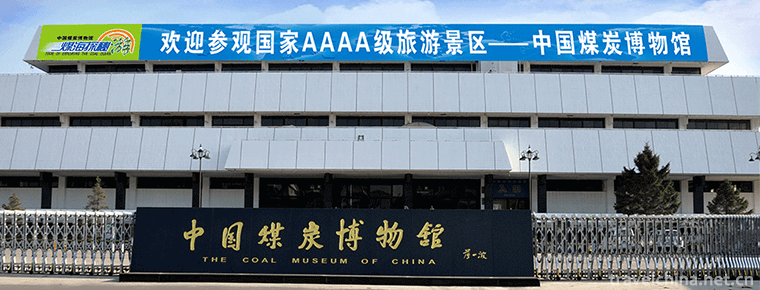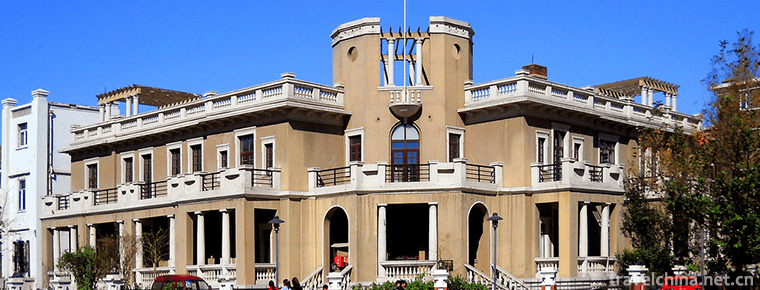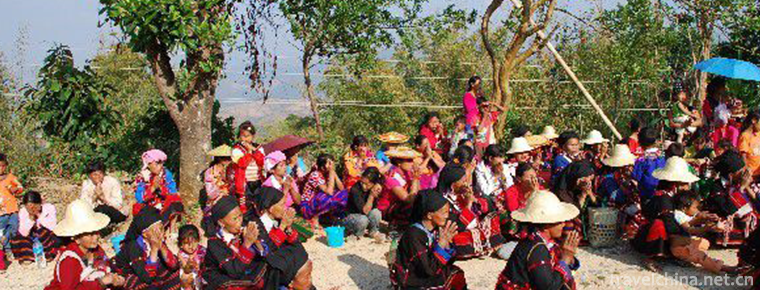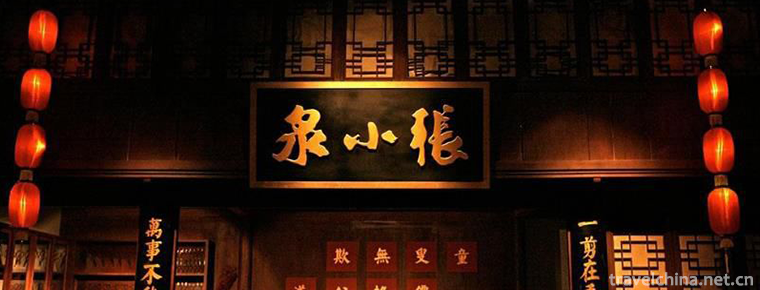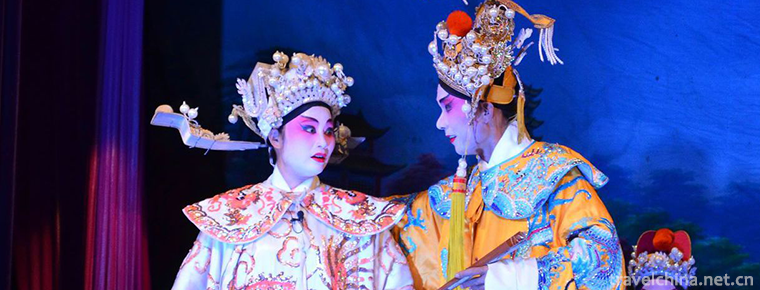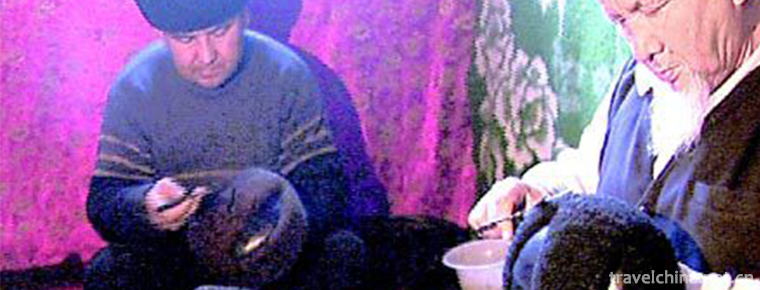Shangluo Flower Drum
Shangluo Flower Drum
Shangluo Flower Drum, Shangluo City, Shaanxi Province, is one of the national intangible cultural heritage.
Shangluo Flower Drum, also known as Flower Drum and Ground Bumper, is popular in 7 counties (districts) of Shangluo City, Shaanxi Province, especially in Shangzhou, Danfeng, Zhenan and Zhashui. During the three years of the Qing Dynasty, Yunyang, Hubei, suffered from floods. A large number of victims entered Shangluo area, bringing the popular Huagu Opera in Yunyang. Later, they gradually changed to Shangluo dialect to sing, and absorbed many folk tunes of Shangluo, eventually forming Shangluo Huagu. The traditional singing music of Shangluo Huagu has a single structure, smooth and graceful melody and a long history. It plays a "living fossil" role in the study of the development and evolution of opera music.
On May 20, 2006, Shangluo Flower Drum was approved by the State Council of the People's Republic of China to be listed in the first batch of national intangible cultural heritage, numbered IV-61.
historical origin
There are many theories about the origin of Shangluo flower drum. According to the legend of Zhenan and Shanyang artists, Shangluo Flower Drum began in Hunan and was uploaded to Hubei, from Hanshui to Ankang and Hanzhong in the south, and from Danjiang to Danfeng, Shangxian and Luonan in the north, and then to Guanzhong. According to the legend of Danfeng and Shangxian artists, Shangluo Flower Drum was derived from the uproar music of Qinlong in Han Dynasty. It was originally used for military drills and military honor guards. Fan Dacheng's "Records of Guihai Yuyazhi" contains a blowing band in Zhuge Liangjun, which is hung around his waist with gongs and drums, struck by his fingers, sang lyrics and routed the enemy. There are also such records in Dunhuang Pick-up and Sui-Tang Romance. The 36 brothers of Wagang Village in the late Sui Dynasty, who used to "beat flower drums" as a cover, were included in the enemy's camp and rescued Qin and Qiong. Therefore, there is the theory of "Tang generals'group flower drums".
After the Five Dynasties, the flower drum entered the folk. In Song Zaju, the "big drum", "big drum", "big drum" and "running Han boat" are the artistic forms of dance passages.
In the Northern Song Dynasty, Wang Yucheng recorded the scenes of the ancient Shangluo people's labor and dance in his poems "She Tian Ci" and "Fu De La Xue Lian Chun Xue". The performance form of Gong and drum music was very similar to the music structure and performance form of "Bacha Opera" and "Xiaodiao Opera" in modern Shangluo people, and "Tian Song" was therefore considered as the early germination of Shangluo Flower Drum Opera.
In the late Ming and early Qing Dynasties, there were small-scale theatrical troupes for entertainment and entertainment in Shangluo. There were three theatrical buildings in Shangzhou Town God's Temple, Xiguan Guan Yu Temple, and outside the east gate of the city.
In the fifth year of Daoguang (1825), the first famous opera troupe, Shangzhou Shuangsheng Troupe, appeared. From then on to the Republic of China, there were more than 100 opera troupes set up in Shangluo, including the flower-drum opera "nest" such as "three female troupes" and the semi-professional troupe such as "Tang generals troupe". During this period, the activities of drama clubs played an important role in the dissemination and development of Shangluo Drum.
During the three years of Qing Guangxu (1877), Yunyang, Hubei, suffered from floods. Many victims drifted around in the form of beating drums and singing. They depended on grain for their livelihood. The tune they sang was called "Huagu Tune". Later, it gradually became known as "Huagu Tune". After spreading to Shangluo, Huagu Tune merged with the local popular folk songs and minors. It also included Weinan, Huayin Yangge and Fanhu minor tunes. Finally, Shangluo Flower Drum with strong local characteristics and beautiful, simple style was formed.
Before the founding of New China, Shangluo Huagu was on the verge of extinction.
After the founding of New China, a large number of folk theatres were absorbed and transformed by state-owned theatre troupes, or disbanded in the form of government decrees. Folk theatres were highly concentrated in cities. Starting from the 1956 "Couple's View of the Lantern", Shangluo Flower Drum made the first successful attempt to move from the folk "ground stall" small drama to the theatre stage, and from then on began the modernization transformation process of Shangluo Flower Drum.
Inheritance and Protection
Inheritance value
Shangluo belongs to the place of cultural exchange between Qin and Chu Dynasty. Under the nurture of Shangluo environment, Shangluo Huagu has a remarkable local color. Shangluo Flower Drum contains the free and unrestrained color of Qin Feng, while permeating with the gentle and delicate flavor of Chu Feng. For example, the repertoire of Huaqiang Hui contains the performance form of Yangko in northern Shaanxi, with the characteristics of Qin culture. Shangluo Flower Drum combines the local characteristics of early boat race, Yangge race and magic girl race. It fully combines the geographical environment of Qin with the beautiful dancing posture of Chu, and highlights the unique regional color of Shangluo Flower Drum. In the performance of Shangluo Flower Drum, the drama day adds scenes in the daily life of the northern people. The language highlights the nature of Shangluo area, has a strong local flavor, and has a certain value of regional cultural inheritance.
Current situation of inheritance
After the reform and opening up, a large number of young and strong workers in Shangluo went out to work. Under the influence of modern culture, farmers'cultural aesthetic psychology has changed. In the countryside, various theatrical performances originally attached to wedding and funeral ceremonies have been replaced by bands of modern significance. The cultural ecological environment has brought adverse effects to the survival of Shangluo Huagu Opera.
In the general survey of intangible cultural heritage in 2011, fewer than 30 folk flower drum artists were registered in Shangzhou, and most of them were aged and had not performed on stage for decades. Most of the recorded original vocal cords are incomplete in lyrics, inaccurate in tune and difficult to recover.
Heritage figures
Xin Shushan, male, born in September 1940 in Shangzhou, Shaanxi Province. On December 28, 2017, Xin Shushan was selected as the representative successor of the fifth batch of national intangible cultural heritage projects and declared by Shangluo City, Shaanxi Province. Project name: Shangluo Flower Drum.
protective measures
Established in 1950, Shangluo Theatre Troupe has organized manpower for many times, conducted in-depth investigation and research in mountainous areas, excavated and sorted out, and put Huagu Opera on the modern stage from the original mattress and floor. Drawing on the advantages of other operas and folk music, Huagu Opera has been constantly sorted out, processed, reformed and innovated so as to gradually mature in technology, enrich in style and improve in art. Shangluo Theatre Troupe also set up a seminar, held "Cultural Heritage Day", carried out non-legacy community activities, and organized the shooting of "intangible cultural heritage - Shangluo Daoqing" special promotional film.
On June 12, 2017, Shangluo Flower Drum Opera Film with a Lamp, co-produced by Shangluo Wenguang New Bureau, Xi'an General Section Film and Television Cultural Media Co., Ltd. and Shangluo City Theatre Troupe, premiered in Shangluo International Film City, Shangluo City, Shaanxi Province, effectively protecting the inheritance of Shangluo Flower Drum.
social influence
Important performances
Shangluo Huagu is represented by Shangluo and Zhenan Opera Troupe. Following the premiere of "Couple's View of the Lantern" in 1956, Shangluo Huagu participated in the performance of "Seeding Walnuts" in the five northwest provinces and regions in 1958.
In March 1982, Shangluo Huagu Liujin County Magistrate performed in Xi'an and was received by Shaanxi provincial leaders Ma Wenrui and Zhang Ze.
On March 8, 1983, in Huairen Hall, Zhongnanhai, Beijing, the Central Director Xi Zhongxun and Zhu Muzi, He Jingzhi, Zhao Boping, Ma Shaobo, Yu Lin met for a group photo. He was also ordered to travel to Tianjin, Dagang Oilfield, Shanghai and Wuhan for two months, visiting 21 performances.
On November 19, 2018, the large-scale Shangluo Flower Drum Modern Drama "Feelings" premiered in Shangluo Film Theatre. More than 700 Party members and cadres in Shangluo City watched the performance.
Honorary recognition
The Moonlight created by Shangluo Opera Troupe in 2002 won 10 awards in the third Shaanxi Art Festival, including excellent repertoire and best screenwriter. In 2003, it represented Shaanxi Province in the eighth China Drama Festival and won seven single awards, such as Cao Yu Drama Literature Award, Special Award and Excellent Screenwriter Award. In the same year, it won the "Five-One Project" Award of Shaanxi Spiritual Civilization Construction, and in 2009, it won the cultural award. The 11th Chinese Drama "Wenhua New Drama" Award.
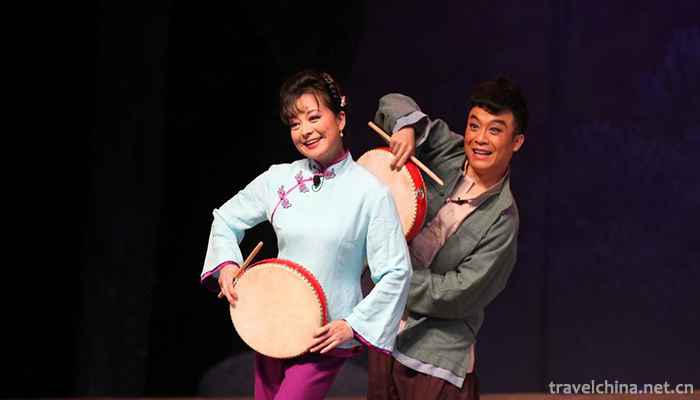
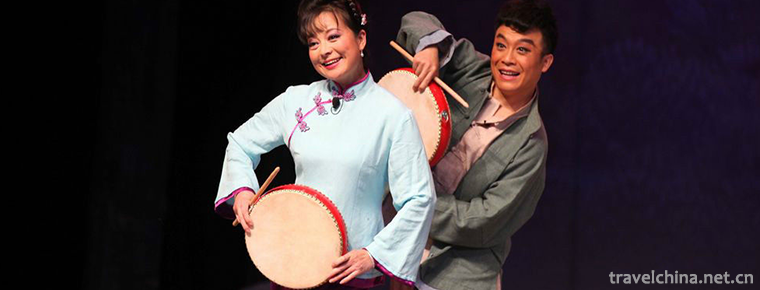
Shangluo Flower Drum
-
Jiaohe ruins
Jiaohe Old Town is the oldest and most well-preserved native building city in the world. It is also the most complete urban relic preserved in China for more than two thousand years
Views: 148 Time 2018-12-22 -
China Coal Museum
The China Coal Museum is located at the intersection of Yingze Street and Jinci Road in Taiyuan City. It was completed and opened on September 30, 1989
Views: 206 Time 2018-12-22 -
Nangongshan National Forest Park
Nangongshan National Forest Park, located in Langao County, Ankang City, Shaanxi Province, is a branch of Hualongshan Mountain of Daba Mountain System, 33 kilometers from the county seat
Views: 203 Time 2018-12-27 -
Bayinbrook Grassland Scenic Area
Bayinbrook grassland: formerly known as Yuledus grassland, Zhuledus grassland, Yuludus grassland, because it is mainly located in Xinjiang Bayinguoling Mongolian Autonomous Prefecture
Views: 116 Time 2019-01-02 -
Tianjin Italian Style Area
Tianjin Italian Style Area is located in Hebei District of Tianjin City. It is a quadrangular area surrounded by Wujing Road, Boai Road, Shengli Road and Jianguo Road in Hebei District. There are near
Views: 161 Time 2019-02-21 -
De ang Watering Festival
The De'ang Water-Sprinkling Festival (also known as the Water-Sprinkling Festival) is held seven days after the Qingming Festival every year. It is a three-day commemorative event that combines the th
Views: 187 Time 2019-04-26 -
Scissors Forging Technology
Zhang Xiaoquan scissors forging technology, local traditional handicraft in Hangzhou, Zhejiang Province, one of the national intangible cultural heritage.
Views: 151 Time 2019-05-05 -
Lei opera
Lei Opera, formerly known as the Grand Opera Class, was once known as "Leizhou Opera" because of its early tune of Leizhou songs. It is one of the national intangible cultural heritage of Le
Views: 157 Time 2019-05-11 -
Uygur Karakul fetus
There is a folk song "Turpan grape Hami melon, turtle's lamb a flower". Shaya Uygur Hatters use local lamb skin to make various hats, such as Duhuawa, Wuniqie and Dulikun, for people to buy.
Views: 195 Time 2019-06-26 -
Shenhai well
Zigong Shenhai well is located at the foot of ruanjiaba mountain in Da'an District, covering an area of 3 mu, with an altitude of 341.4 meters. The well was excavated in the third year of Daoguang in Qing Dynasty (1823 A.D.) and completed in the 15th year of Daoguang (1835 A.D.), which lasted 13 years
Views: 167 Time 2020-10-15 -
Yulei mountain
Yulei mountain, according to the original note of "Mian County" in the book of geography of Han Dynasty, "the water of Yulei mountain flows from southeast to Jiangyang and enters into the river." In Shuo Wen, the word "Yu" is written as "the water flows out of Sichuan county, Mian Yu Lei, Shandong Province, and enters the river in the south of Shandong Province
Views: 415 Time 2020-11-08


